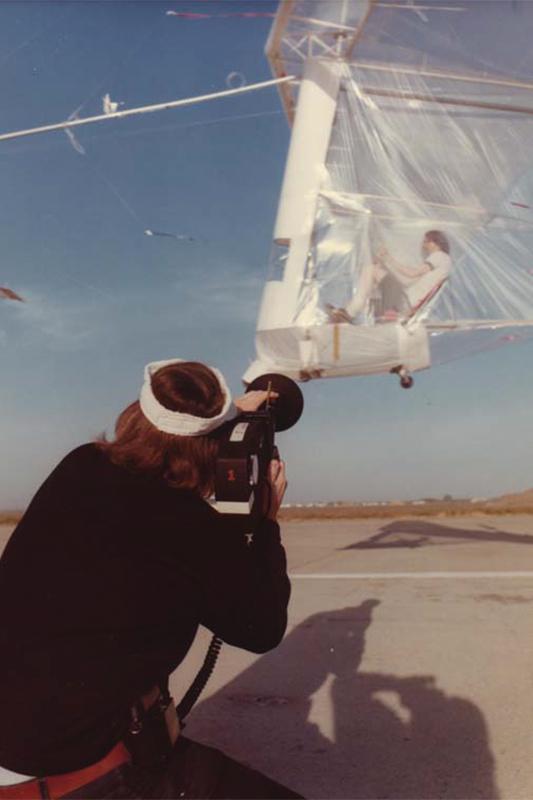
In 1978, the documentary “The Flight of the Gossamer Condor” won an Academy Award, and tonight at 6 p.m. the director, Ben Shedd, and Bryan Allen, who piloted the first human-powered aircraft, will share their experiences.
The event is part of the Valley Firsts series that has brought a variety of exhibits to the Leon S. Peters Ellipse Gallery on the second floor of the Henry Madden Library.
The film documents the flight of the Gossamer Condor, the world’s first fully controllable human-powered aircraft.
Shedd, a Stockton native, is an Academy Visiting Artist funded by the Academy of Motion Picture Arts and Sciences who won a Peabody Award for his work with the PBS series “Nova.”
Allen, from Tulare, Calif., pedaled the Gossamer Condor into history during a flight that lasted seven minutes and 27 seconds. Later, Allen piloted a second award-winning flight, the Gossamer Albatross, across the English Channel in two hours and 49 minutes.
In a one-on-one interview with The Collegian, Ben Shedd previewed the showing of the documentary and his experiences making the award-winning documentary.
THE COLLEGIAN: What led you to the project?
SHEDD: I was based in Los Angeles at the time. I had worked on the Nova series on public television and I met Paul MacCready, the guy who designed and made the Gossamer Condor happen, as part of a research project. I knew his next-door neighbor. I knew it would be a cool film to make. There were several indicators in his research that he would make a significant leap.
It was a 50,000 British pounds-sterling prize, which at the time was $2 to the pound so it was a $100,000 prize. Paul MacCready wanted to win the money because he had cosigned a loan his brother had on a company. How do you get $100,000 quick? You invent the first human-powered plane in history. I knew he was very motivated. I knew he wasn’t going to stop until he tried all possibilities.”
The group designing the aircraft needed a pilot who also had the physical endurance to pedal hard enough to provide the power to fly. Who was the pilot?
One of the guys’ roommate was an unemployed guy named Bryan Allen, a bicycle racer and hand-glider pilot. He could do the two things at the same time: he could add substantial power and control the wings so it didn’t have much drag.
It sounds like you need a great athlete and a pilot to make this work?
That was Allen. I flew one of the backup versions one day for 20 seconds, and I was utterly exhausted.
One has to realize the density of the air. You have to think about swimming through the water. This was 1984, and I can still remember how aching my thighs were.
Before he flew the Gossamer Albatross, he was biking 70 miles a day to train.
The film was appreciated by a wide audience and found its way into the classroom. How are students benefitting from the film?
There’s a national school program for engineers called Project Lead the Way.
The curriculum writer called me and said he’d been using the film for his college classes and he loved it. It’s been used the last six years in high schools.
The general arc of the process of making the Gossamer Condor follows engineering when it makes breakthroughs. You come up with a plan, then you build it and you test it.
If it doesn’t work, then you repair it and reconsider it and keep trying until it works. It becomes a model for what would work.
That’s why the film is used in schools.
What is different about making a documentary than other films?
I found that I know how to take a process and then take it apart and then recreate it for an audience. Part of it, I’m pretty convinced, has to with the fact that as a small child my great uncle came through Stockton, Calif.
He was an amateur magician and came from a magic convention. I can still see the magic show he did in our backyard when I was 2 ½ years old.
I became a working magician at age 7 doing kid’s birthday parties until I was about 14. I am now convinced being a documentary filmmaker is really about making the illusion of reality.
People can experience the event like they are there.





